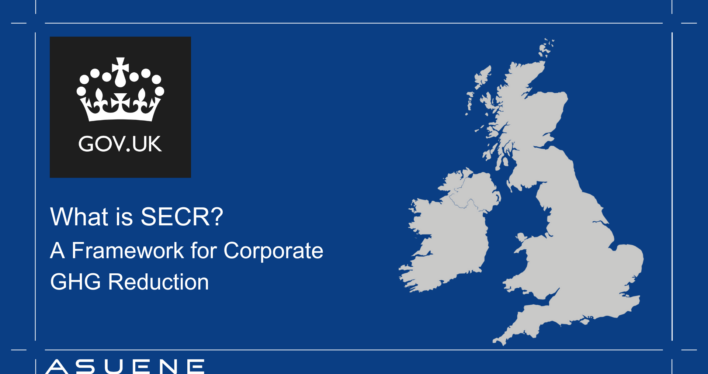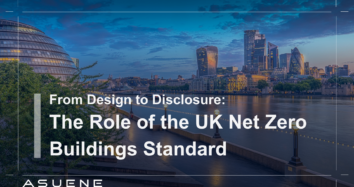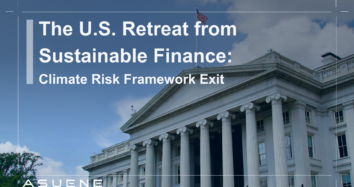- Article Summary
-
Overview
In recent years, the importance of climate change mitigation has been growing. Companies are also expected to play a crucial role in reducing greenhouse gas (GHG) emissions. One of the key initiatives in this effort is the SECR (Streamlined Energy and Carbon Reporting) regulation, introduced in the UK.
SECR is designed to enhance transparency regarding corporate energy usage and carbon emissions while encouraging reductions. This system, implemented in April 2019, mandates specific businesses to report their energy consumption and emissions annually.
After reading the article you will be able to…
- Understand the basics and objectives of SECR
- Identify which companies are subject to SECR requirements
- Learn what data must be reported under SECR
- Recognize the benefits and challenges of SECR compliance
- Gain insight into how companies can successfully implement SECR measures
What is SECR?
SECR (Streamlined Energy and Carbon Reporting) is a regulatory framework designed to enhance corporate transparency regarding energy consumption and greenhouse gas emissions. It requires certain businesses, particularly large companies and limited liability partnerships (LLPs), to disclose their annual energy usage and carbon emissions in their financial reports.

Objectives
The primary goal of SECR is to promote corporate environmental responsibility. Specifically, it aims to:
- Increase awareness of energy costs
- Encourage improvements in energy efficiency through data utilization
- Reduce greenhouse gas emissions
Businesses Subject to SECR Reporting
Companies that fall into one of the following categories are required to comply with SECR:
| Company Type | Eligibility Criteria |
|---|---|
| Quoted Companies | All companies listed on a UK stock exchange (e.g., London Stock Exchange, NASDAQ, NYSE) |
| Large Unquoted Companies | Must meet at least two of the following criteria: 1. Annual turnover of £36 million or more 2. Balance sheet total of £18 million or more 3. 250 or more employees |
| Large LLPs (Limited Liability Partnerships) | Must meet the same criteria as large unquoted companies |
SECR Reporting Requirements
SECR-subject companies must submit the following data annually:
| Reporting Item | Details |
|---|---|
| Energy consumption (UK-based) | Electricity, gas, and transport fuels (used in offices, factories, vehicles) |
| GHG emissions | Scope 1 (direct emissions) and Scope 2 (indirect emissions) |
| Emission intensity ratio | CO2 emissions ÷ number of employees, etc. |
| Previous year’s data | Data for comparison |
| Energy efficiency measures | CO2 reduction efforts (e.g., renewable energy adoption, electric vehicle introduction) |
Three Key Benefits of SECR
While SECR provides many benefits, companies may face certain challenges when implementing it.
- Meeting Detailed Reporting Requirements:Collecting and reporting accurate energy and carbon emission data can increase operational workload.
- Initial Costs and Talent Acquisition:Implementing data management systems and hiring experts with relevant knowledge may require significant investment.
- Integration with Existing Systems:Companies may encounter technical difficulties when aligning SECR requirements with existing energy management systems.
- Cultural and Organizational Change:Successful SECR implementation may require fostering an environmental awareness culture, which could face resistance within the company.
Steps Companies Should Take
To comply with SECR, businesses should follow these steps:
- Determine Eligibility : Confirm whether the company is subject to SECR regulations.
- Establish a Data Collection System : Develop a framework for accurately gathering energy consumption and emission data.
- Calculate Emissions : Use collected data to compute carbon emissions.
- Prepare Reports : Compile a report containing the required SECR information.
- Disclose Information : Publish the report in annual reports or on the company website.
- Set Emission Reduction Targets and Implement Measures : Go beyond compliance by setting concrete GHG reduction goals, referencing initiatives such as the SBTi FLAG.
Why Partner with ASUENE USA Inc.?

To navigate the complex climate disclosure requirements, appropriate tools and expertise are essential. This is where ASUENE USA Inc. comes in.
Carbon Accounting: Our advanced software solutions automate emissions tracking across Scopes 1, 2, and 3, integrating with existing ERP systems to reduce manual data entry errors. Proprietary algorithms align with GHG Protocol standards, ensuring compliance with ESG reporting mandates.
Third-Party Verification: ASUENE’s network of accredited auditors provides ISO 14064-compliant verification services, a critical step for companies seeking to validate their disclosures.
By partnering with ASUENE USA, businesses can transform regulatory obligations into strategic advantages, enhancing sustainability performance while minimizing compliance costs.
So, why not partner with us to streamline your reporting and environmental efforts? Let ASUENE USA Inc. help you stay ahead of the curve while making a positive impact on both your business and the planet.
Talk to us today for your sustainable transformation!
Source
- https://www.gov.uk/government/publications/college-corporation-financial-management-good-practice-guides/streamlined-energy-and-carbon-reporting-for-college-corporations
- https://www.pwc.co.uk/services/audit/non-financial-assurance/streamlined-energy-and-carbon-reporting.html
- https://www.carbmee.com/knowledge-insights/blog-article/streamlined-energy-and-carbon-reporting-guide
Download our latest White Paper




